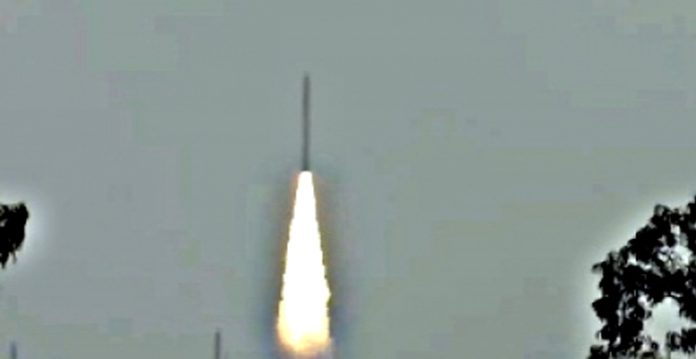India’s new rocket Small Satellite Launch Vehicle (SSLV-D2) on Friday morning lifted off with an earth observation satellite-07 (EOS-07) weighing 156.3 kg.
Piggybacking on that are two other satellites — 10.2 kg Janus-1 belonging to ANTARIS of the US and 8.7 kg AzaadiSat-2 belonging to Space Kidz India, Chennai.
The SSLV-D2 is carrying a total weight of 175.2 kg. The Indian Space Research Organisation (ISRO) has developed SSLV with a carrying capacity of 500 kg to the Low Earth Orbit (LEO) based on the market trend of going in for smaller satellites.
Also Read: ISRO to launch navigation, Aditya satellites: Chairman
At about 9.18 a.m. the 34-meter tall and 120-ton expendable rocket costing about Rs 56 crore broke free of the first launch pad and started its upward one-way journey.
The rocket with a thick orange flame at its tail slowly gathered speed and went up and up.
As to the mission’s objectives, ISRO said it is to demonstrate the designed payload capability of SSLV in LEO and injection of three satellites — EOS-07, Janus-1, and AzaadiSAT-2 — into the 450 km circular orbit.
About 13 minutes into its flight, the SSLV rocket will eject EOS-07 and soon after that the other two satellites Janus-1 and AzaadiSAT-2 would be ejected — all at an altitude of 450 km, said ISRO.
With the new rocket in its portfolio, ISRO will have three rockets — Polar Satellite Launch Vehicle (PSLV) and its variants (cost about Rs 200 crore), the Geosynchronous Satellite Launch Vehicle (GSLV-MkII cost about Rs 272 crore, and LVM3 Rs 434 crore) and SSLV (Development cost of three rockets about Rs 56 crore each) and production cost may go down later.
The SSLV’s maiden flight — SSLV-D1- on August 7, 2022, was a failure as the rocket had put the two satellites — EOS-01 and AZAADISAT — in a wrong orbit resulting in their loss.
According to ISRO, the onboard sensors of SSLV-D1 were affected due to vibrations during the separation of its second stage. While the rocket’s software was able to perform the ejection of the satellites, the ejections were done into the wrong orbit. The satellites also lacked the necessary velocity to be in a stable orbit and went into oblivion.
(This story has been sourced from a third-party syndicated feed, agencies. Raavi Media accepts no responsibility or liability for the text’s dependability, trustworthiness, reliability, and data. Raavi Media management/ythisnews.com reserves the sole right to alter, delete or remove (without notice) the content at its absolute discretion for any reason whatsoever.)


